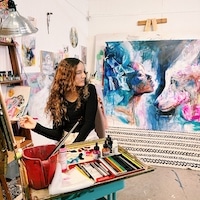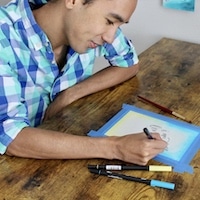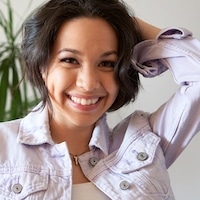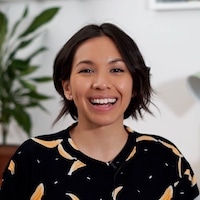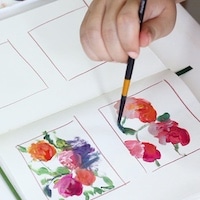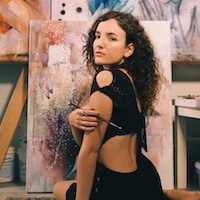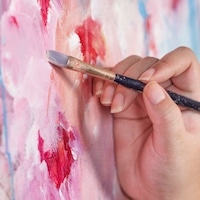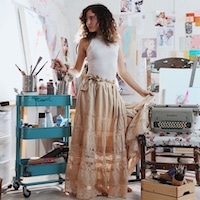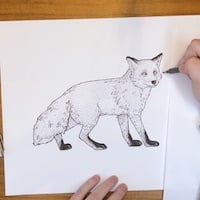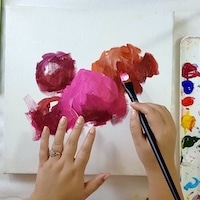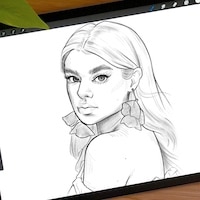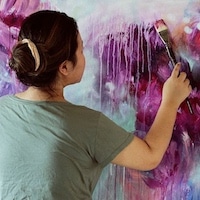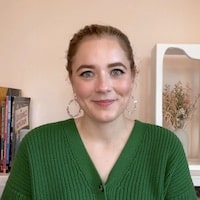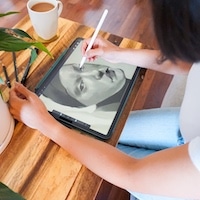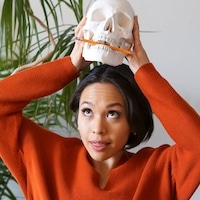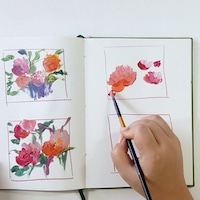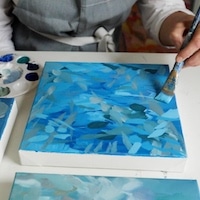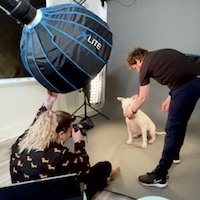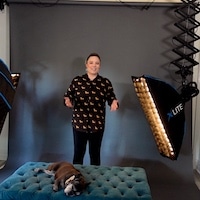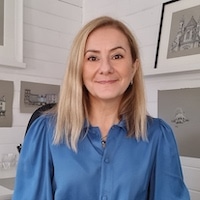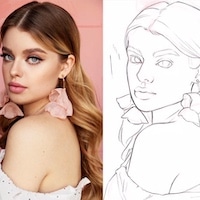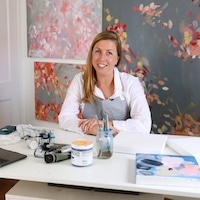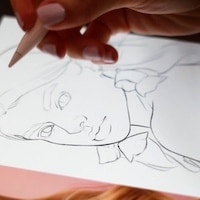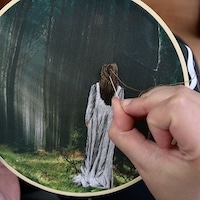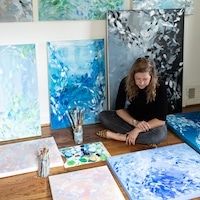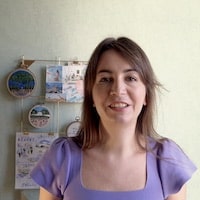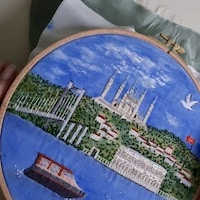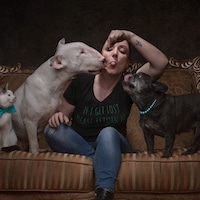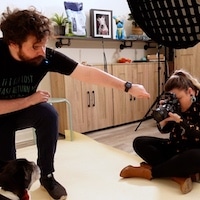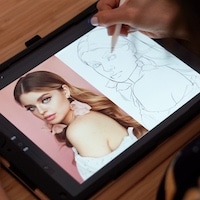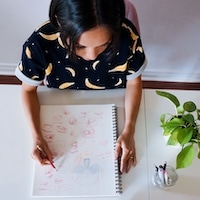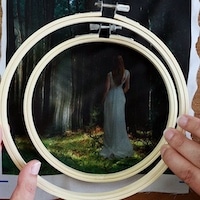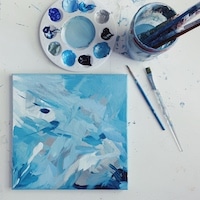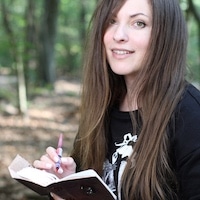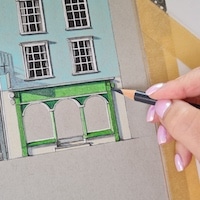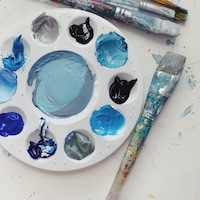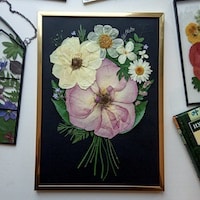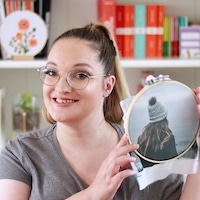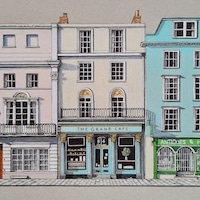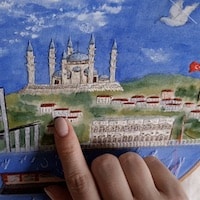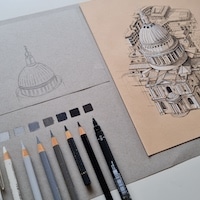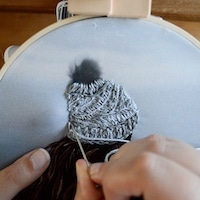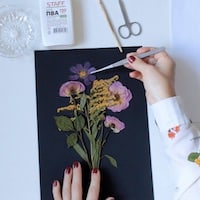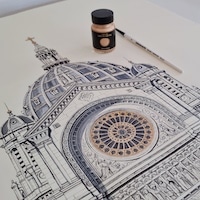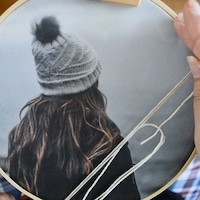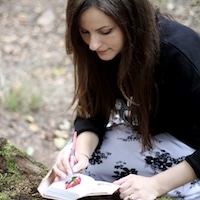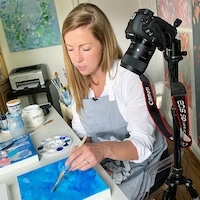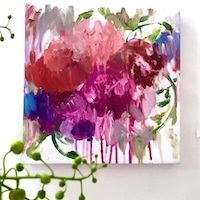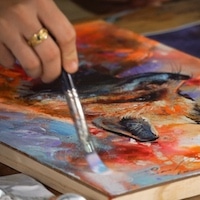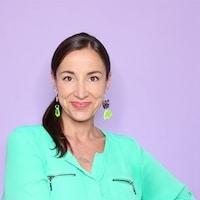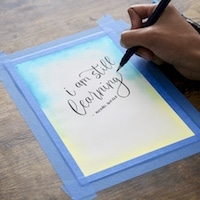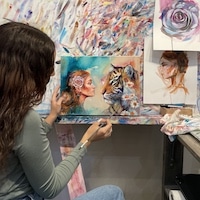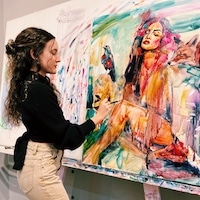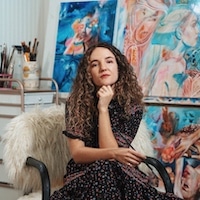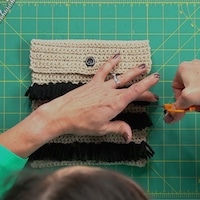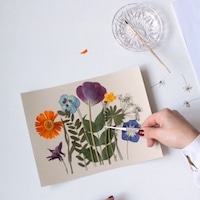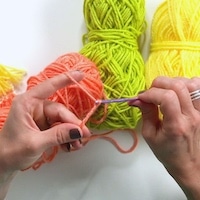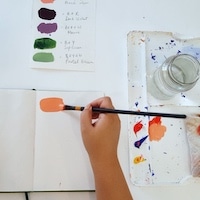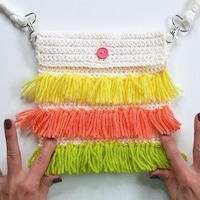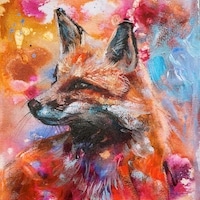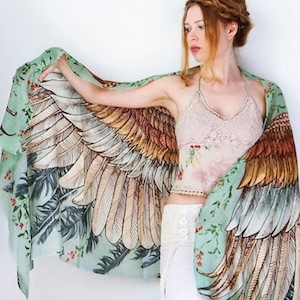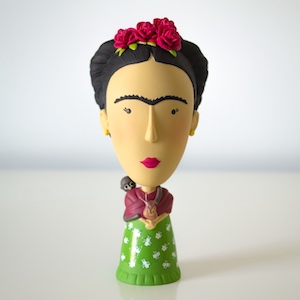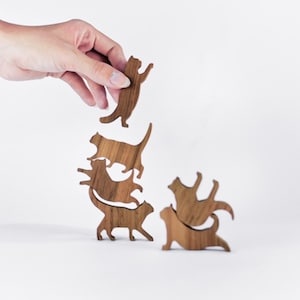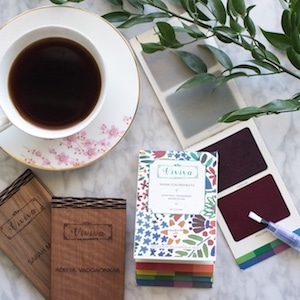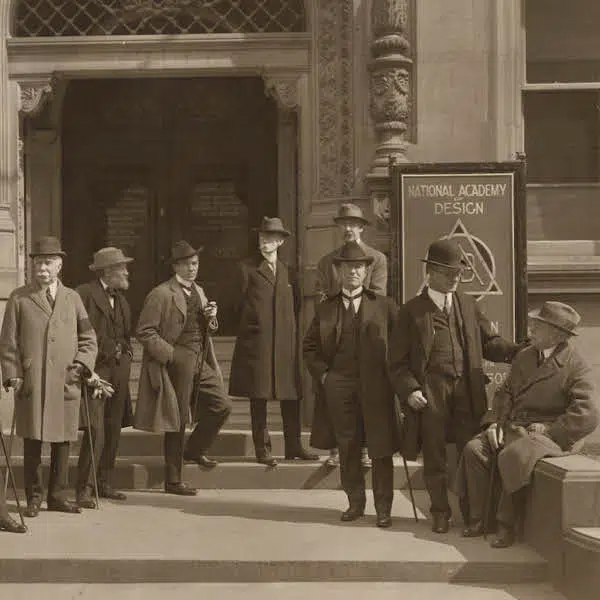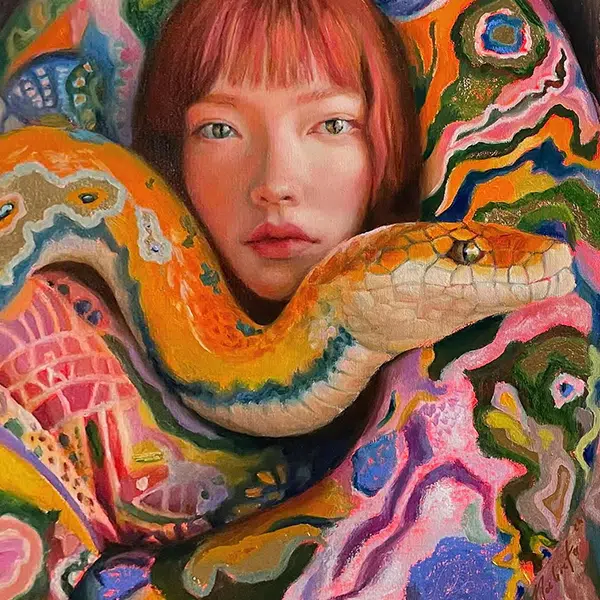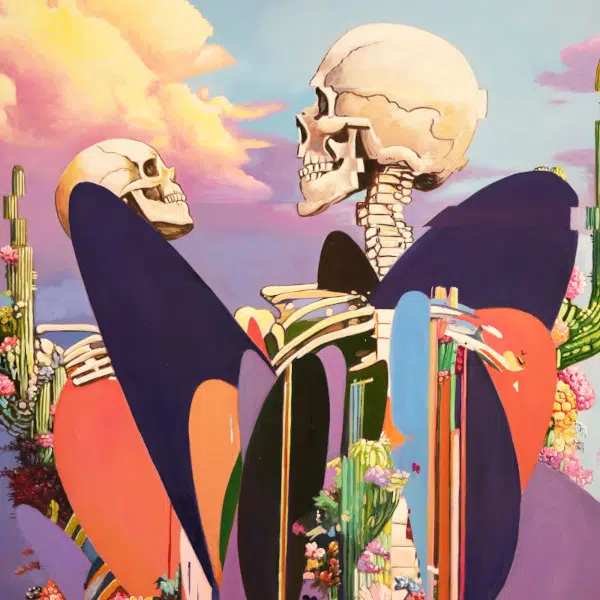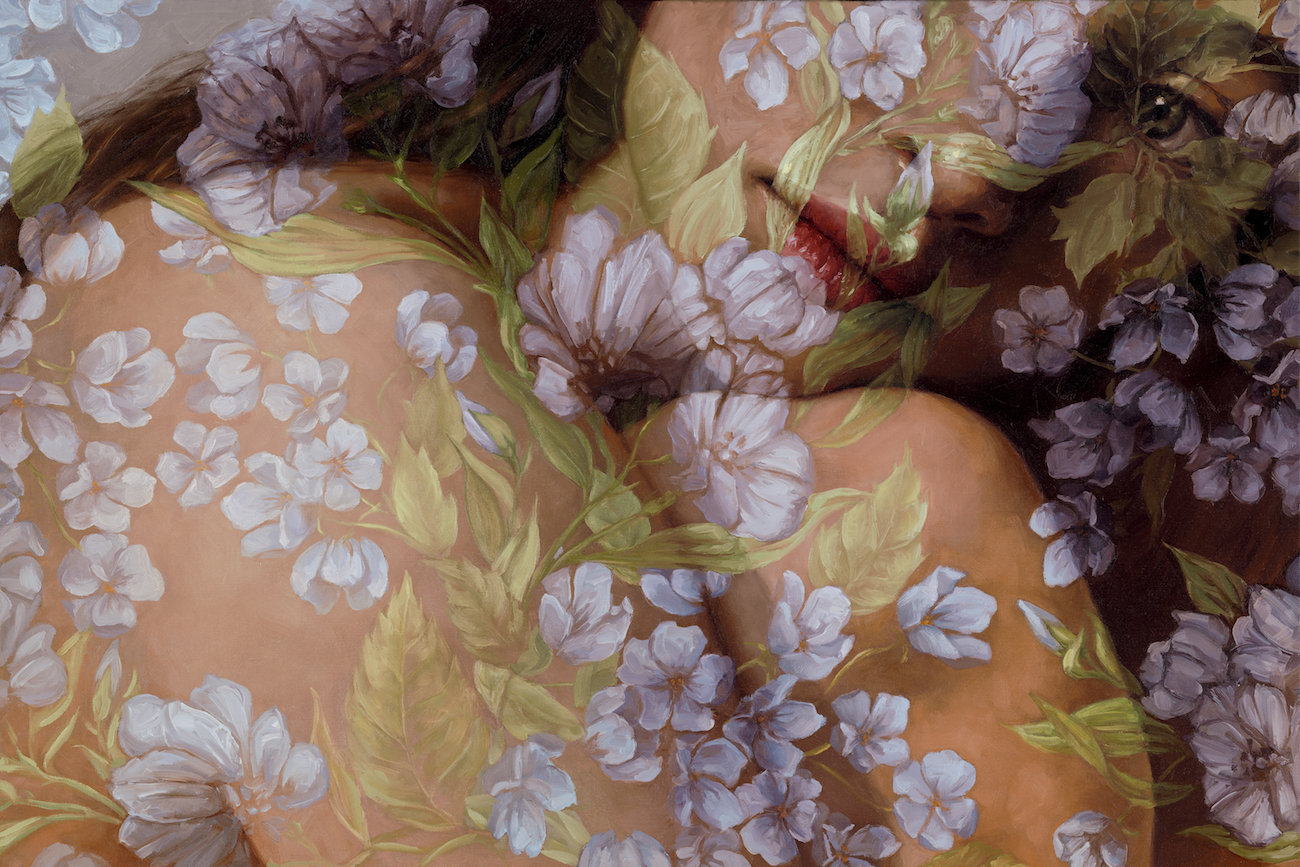
For the California-based artist Jess Currier, flowers aren’t just beautiful: they’re also critical symbols of resilience, of trials and triumphs, of grief and joy. In a word, they’re evocative reminders of life’s continuity.
It naturally follows, then, that Currier’s work revolves around humanity’s relationship to nature. For years, the artist has combined floral imagery and portraiture, reimagining the limits of the classical style. Her paintings abound with delicate petals, each translucent enough to reveal the faces hiding beneath them. The resulting canvases contain a rare sense of magic, where women and flowers become a single entity.
Magic, Currier believes, is central to her practice as well. As her primary medium, oil paint is unique in its depth, vividness, and texture, allowing Currier to produce compositions that are at once bold and intimate. Their dreamy surfaces invite further inspection and satisfy the artist’s goals of showcasing the ephemeral beauty of flowers.
“In my darkest moments, I’ve returned to flowers as symbols of resilience,” Currier explains, “of making the choice, again and again, to keep living, to keep finding beauty even when we know it’s fleeting.”
My Modern Met had the chance to chat with Jess Currier about her artistic practice, how she creates such tactile paintings, and the role of flowers in her artwork. Read on for our exclusive interview with the artist.
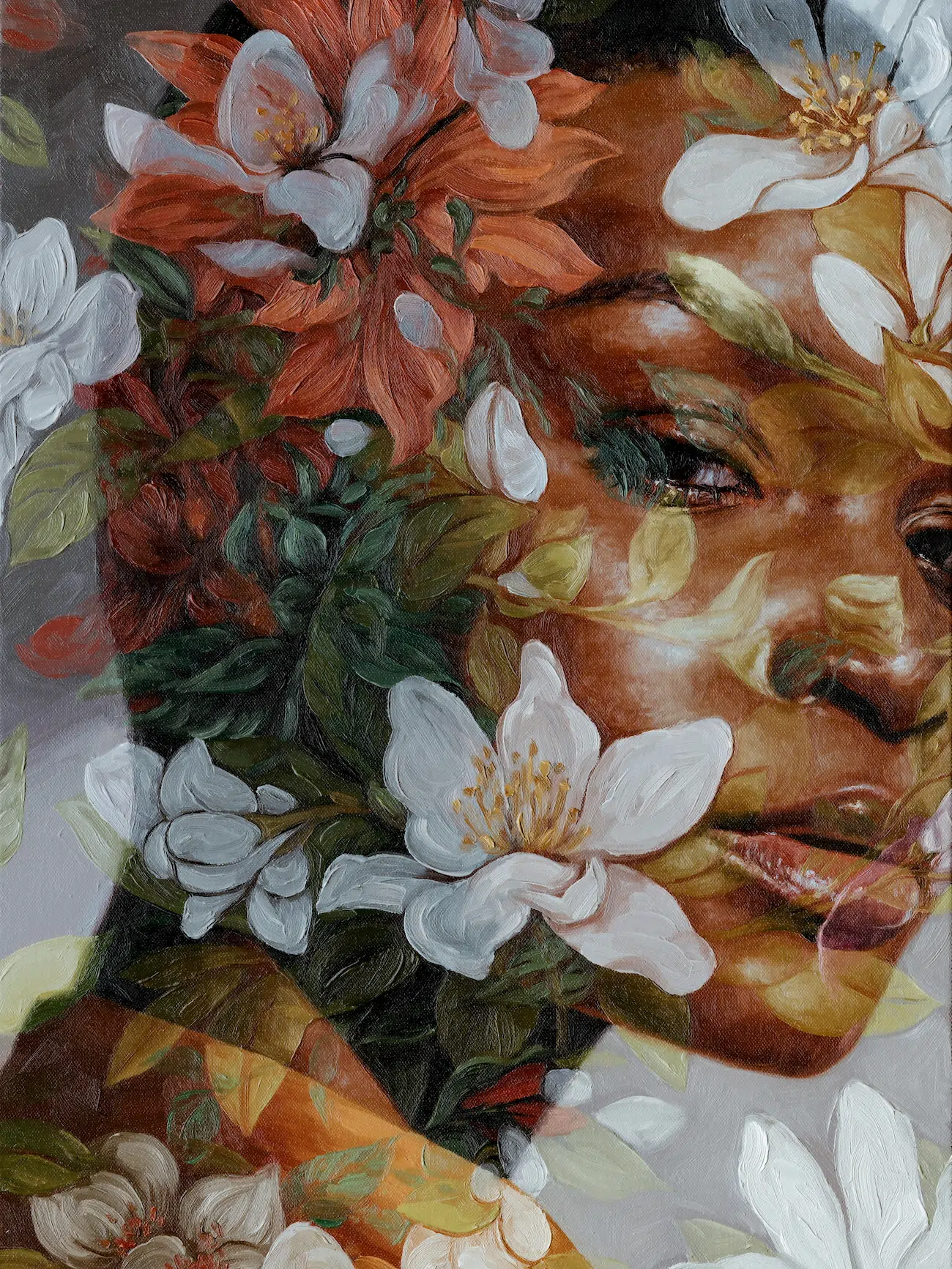
What originally drew you to painting as your preferred medium, and how did you develop your personal style?
For as long as I can remember, I have loved paint. How magical is it that we can combine earth and oil and use it to record our movements and communicate feelings to other humans? I have been painting for almost half my life now, and I am still not over this. It is alchemy. Sorcery, even.
I suppose that could be argued of all art forms, but nothing has ever enchanted me quite like oils. Everything you’re tired of hearing painters say about their depth, richness, luminosity… the alive-ness of oil paint? It’s all true and then some. It’s initially a tricky medium that certainly takes dedication to learn, but once you earn an intimate knowledge of it through practice, you’ll be rewarded for the rest of your life.
This is, in essence, how I found my style. I worked, and worked, and worked more, and while I was working, patterns emerged.
Perhaps we have some say in the direction our creativity takes, but I’ve found it to be more like the job of an archeologist—slowly uncovering something buried beneath the surface. It took nearly a decade of painting consistently for me to cultivate the distinct voice my work has today.
Even now, I feel like I’m still just getting started. There is no end goal. “Personal style” is just shorthand for saying what we need to say at any given point in our journey. It will—and should—be in a constant state of evolution. I think that’s part of the magic.
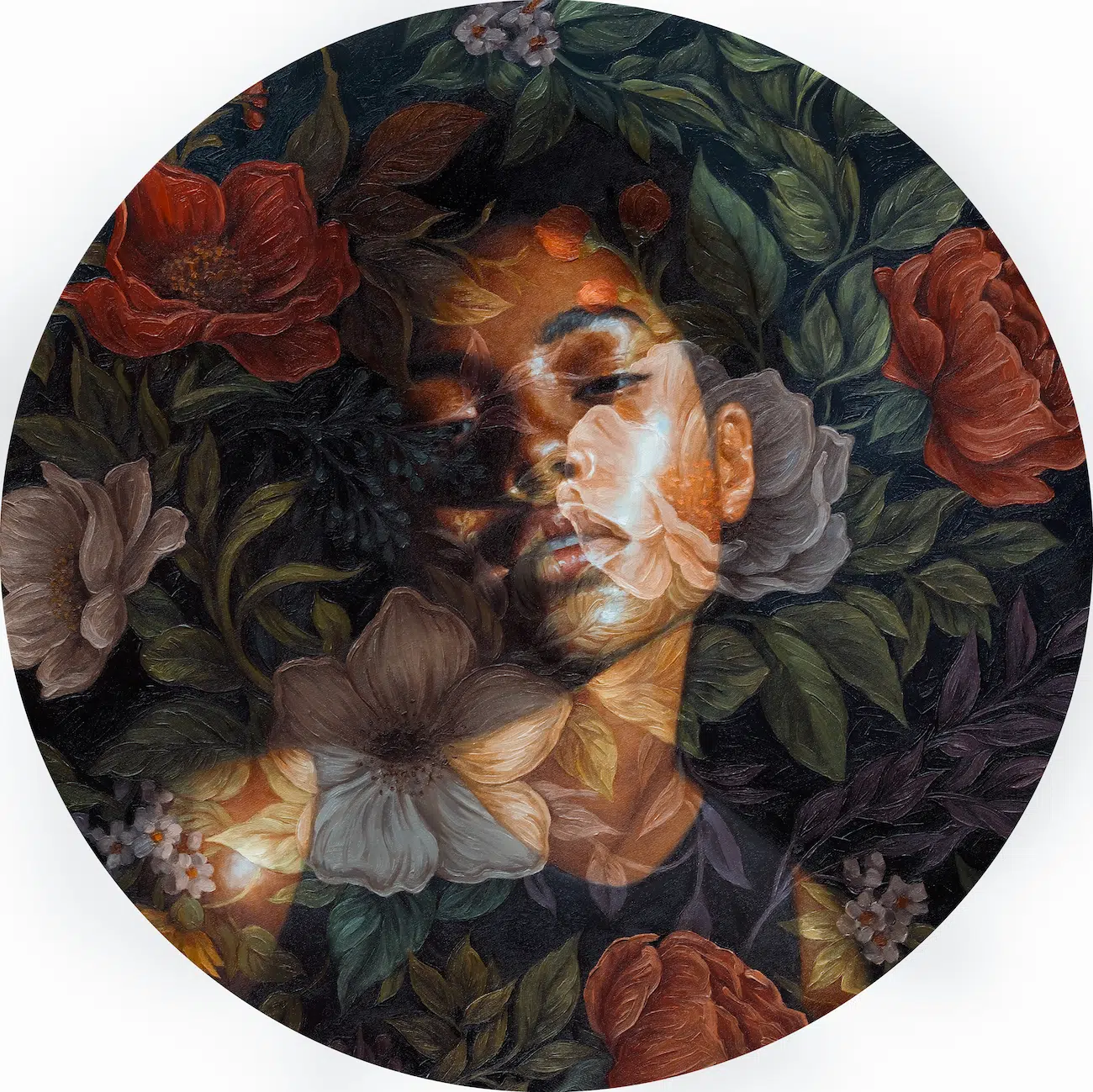

What is your creative process? What are the stages of creating one of your paintings?
It starts with play. The earliest stages of a painting are where most of the creativity lives for me. I’ve built up a catalog of references for myself over the years, and whenever the mood strikes (which is often), I just sit at my computer and start messing with them in Photoshop. I lay different floral patterns over different figures and keep playing with them until something clicks.
After years of formal art education, I’m sure that rules of composition and balance are informing my choices at this stage, but more than anything, I let intuition lead. This part is where curiosity lives. It’s pure play. Pure exploration. I often have an idea of what I want to say or how I want a piece to feel. Sometimes I don’t. The only rule for this stage is that anything goes.
I might do one mockup or a dozen, but I listen to my gut for when one of them needs to become a painting. There’s a certain energy—a palpable sense of urgency to be brought to life. Once a composition hits that point, I scale it to my substrate with a rough sketch in thinned oil paint. Then, the real work begins.
People often ask me how I paint the sheer floral layers in my work, but the truth is I don’t. There is no secret. I paint the image all at once, working alla prima across the canvas, just referring to my digital mockup. I paint what I see. The illusion of transparency is just that: an illusion. It’s as simple and as complicated as choosing the right color to lay down that will make it look like there’s an eye you can see behind this translucent petal.


What intrigues you about floral and botanical imagery, and how do you incorporate this throughout your art?
Flowers have always been more than just beautiful. They hold space for us, marking our greatest joys and deepest grief. We give them to our lovers. We lay them at graves. They are alive. We try to keep them. They die.
In my darkest moments, I’ve returned to flowers as symbols of resilience—of making the choice, again and again, to keep living, to keep finding beauty even when we know it’s fleeting. The very nature of their momentary existence invites us to remain awake to the paradox of suffering and beauty that comes with being human.
This tension is part of why I keep my floral patterns both sheer and illustrative. They are more reminiscent of vintage wallpapers—their original inspiration—than of “real” flowers. These abstracted veils of floral patterns are my way of visualizing our perceptions of ephemeral beauty as we stumble between grief and hope in the face of our own fleeting existence.


What themes do you find yourself returning to again and again in your art?
Everything I paint is about beauty as an act of brave rebellion against despair, not least because that’s what painting itself is to me. Creativity is the bravest, truest response to depression that I’ve found. In the face of trauma and abuse and injustice… to turn around and make something. As a woman, to use my voice and take up space. In a world that does everything it can to consume us or make us disappear, to say, “I was here. I made this. Look at the beauty.”
For now, flowers are the metaphorical language that feels best suited to hold this idea. I love them for all their symbolism, and for the way they create an unapologetically feminine aesthetic. But I expect the visual framework of these themes will evolve and change with me over time, as creativity so graciously does.


How do you achieve such bold and textured canvases? What elements do you keep in mind when creating a composition?
My favorite art nearly always shows evidence of the artist’s hand. Even as a sort of realist painter, I keep that in the back of my mind as I work. I want to see the recorded movement of every stroke. For me, there’s a particularly powerful magic in “disrupted realism”—a term coined by John Seed, who’s released two fantastic art books on the theme. I think the interplay between technically skilled realist representation and a raw, emotive expression of the materials is endlessly fascinating.
From a distance or a tiny screen, my work can read as quite technical, which it sometimes is. But up close, you can see the paint being paint. I use an obscene amount of it. I work with bigger brushes. I try to move fast to keep the energy in it. Oils are so alive. I’m constantly learning how to create an image while I also get out of the way and let them shine.
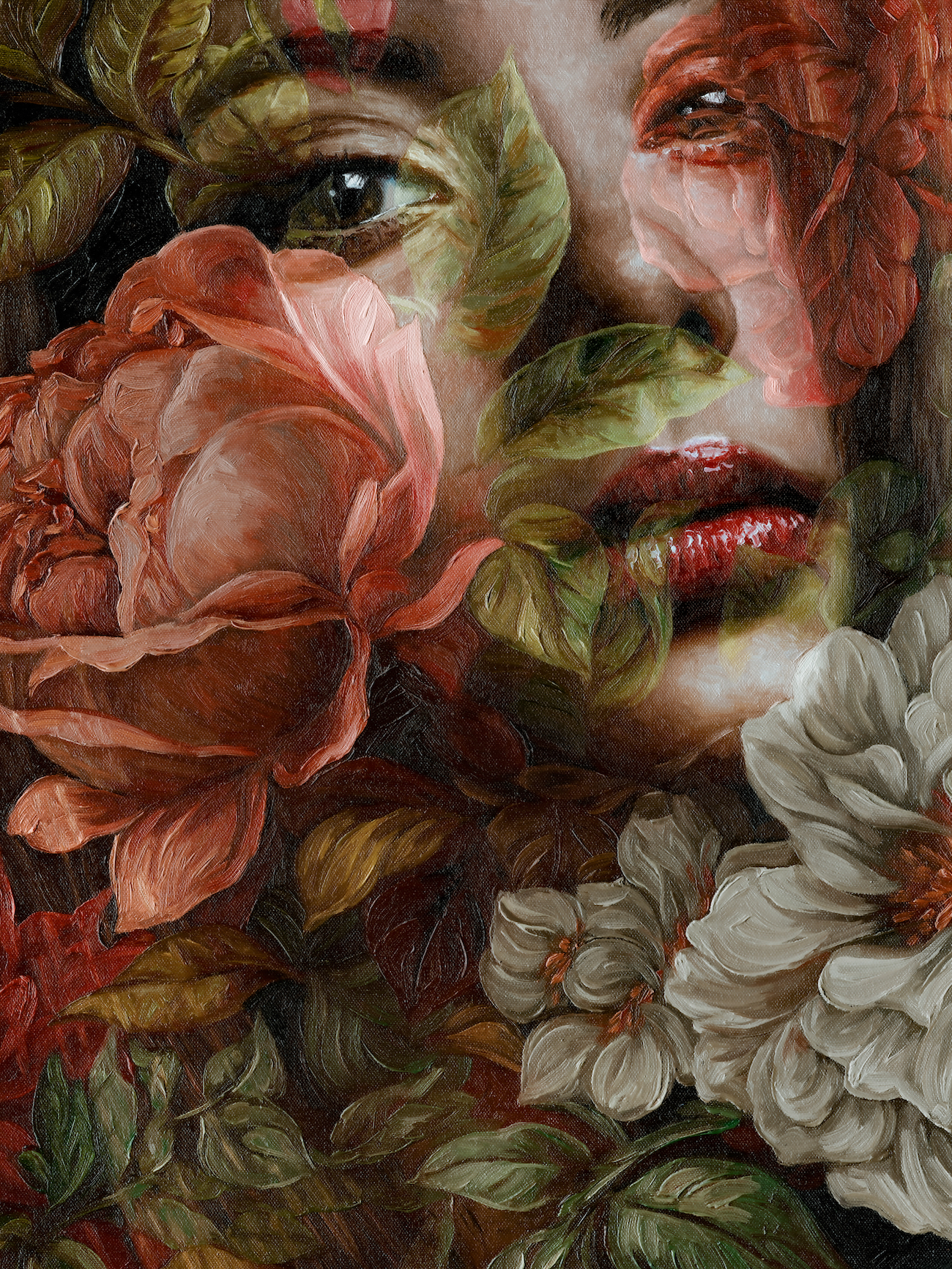
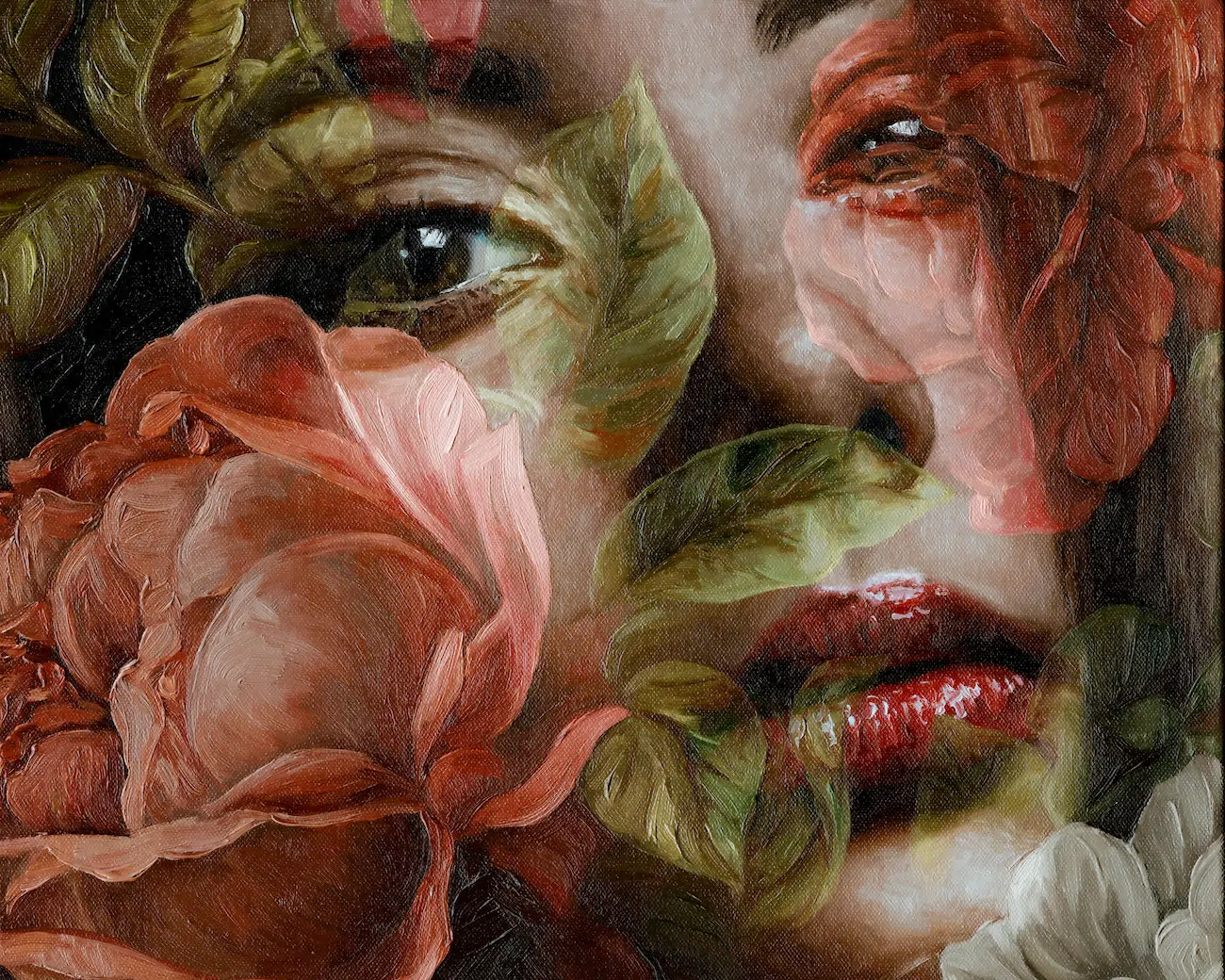
How has your artistic practice evolved throughout the years, and what do you hope to focus on in the future?
My practice really hit a stride in 2019 when I began painting a lot of small quick studies during grad school, mostly portraits and florals (my muses have certainly been consistent over the years). It was through dozens and dozens of these that I found my voice and my stroke. They eventually combined into large compositions of figures immersed in foliage and flowers.
Faced with losing access to my studio space during the pandemic, I shifted my focus to smaller paintings of models that I photographed through a veil of floral fabric to mimic a double exposure image. I pretty quickly embraced digital tools to give myself more control of the process, developing the methods I still use today.
From here, I think things are about to get a lot weirder. I’m playing with more abstraction in my next references and making a concerted effort to tune out any ideas about what people might think. There’s more color, more chaos, and a deeper sense of vulnerability in the work I have ahead of me.

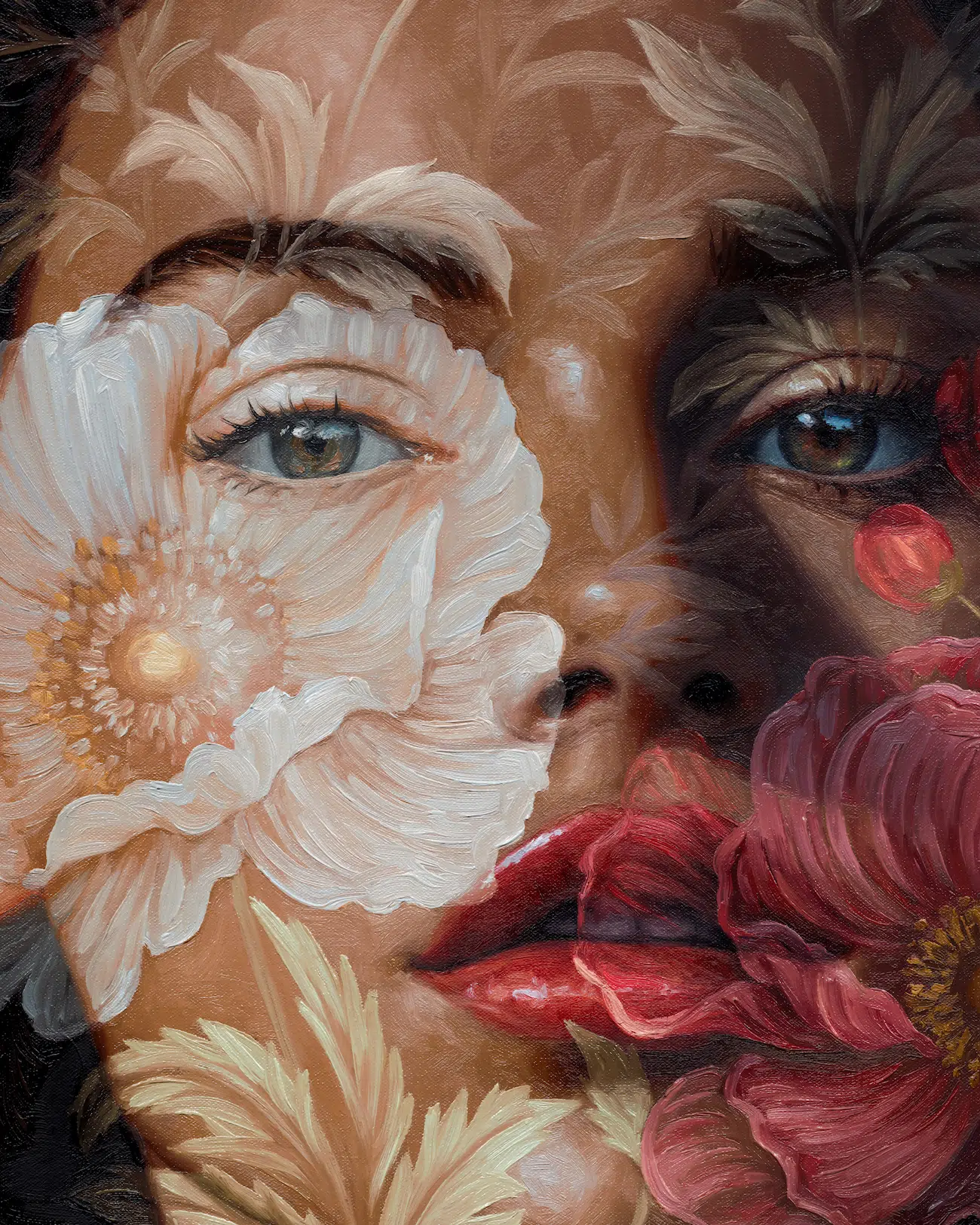
What do you hope people will take away from your art?
My biggest dream is that someone might encounter my work and walk away with an expanded vision of what’s possible for themselves. Perhaps that’s as straightforward as feeling inspired, or simply a closer noticing of something beautiful. But in my core, I want both my life and my work to be the lighthouse I wish I had as a kid.
I grew up in a very isolated, high-control religious environment. There was a clear role predetermined for me, especially as a woman in that world. It took me well into my thirties to really break free from that conditioning, and my work has been the catalyst for my own rebirth throughout the transition. I hope that people, especially other women, can feel that journey in my paintings.
My breaking free is inextricably tied to my choice to keep living. They are one in the same, really. Every brushstroke of every single one of my paintings is an act of reclaiming my own life. Reclaiming my agency and identity in the face of control and abuse. Reclaiming beauty and hope in the face of grief and despair. I hope the resulting art serves as an invitation for the viewer to reclaim their own life, too.

